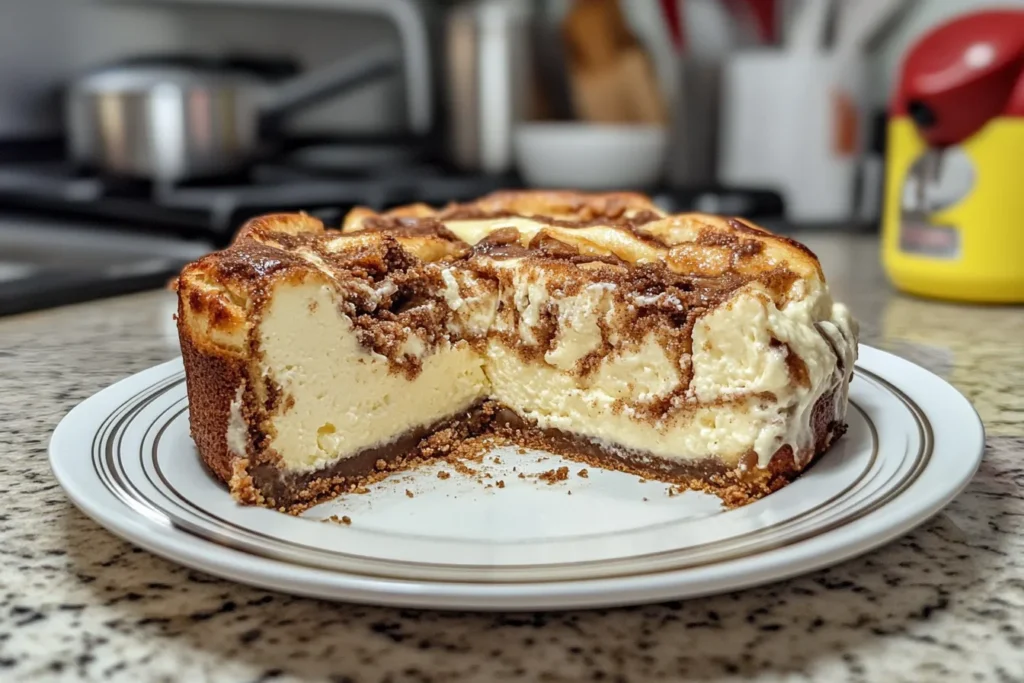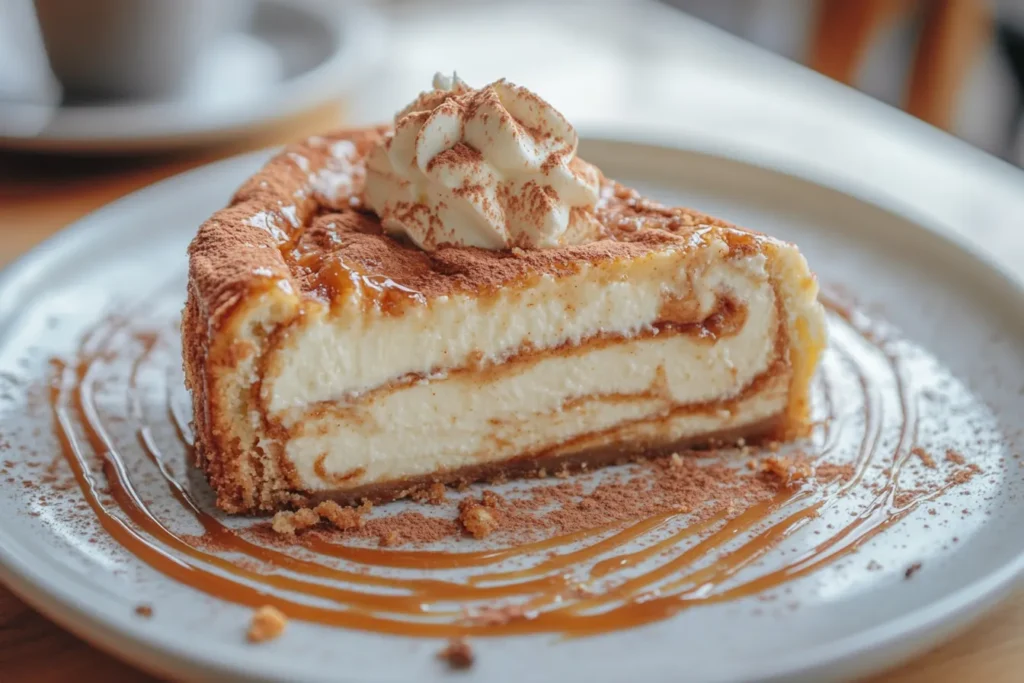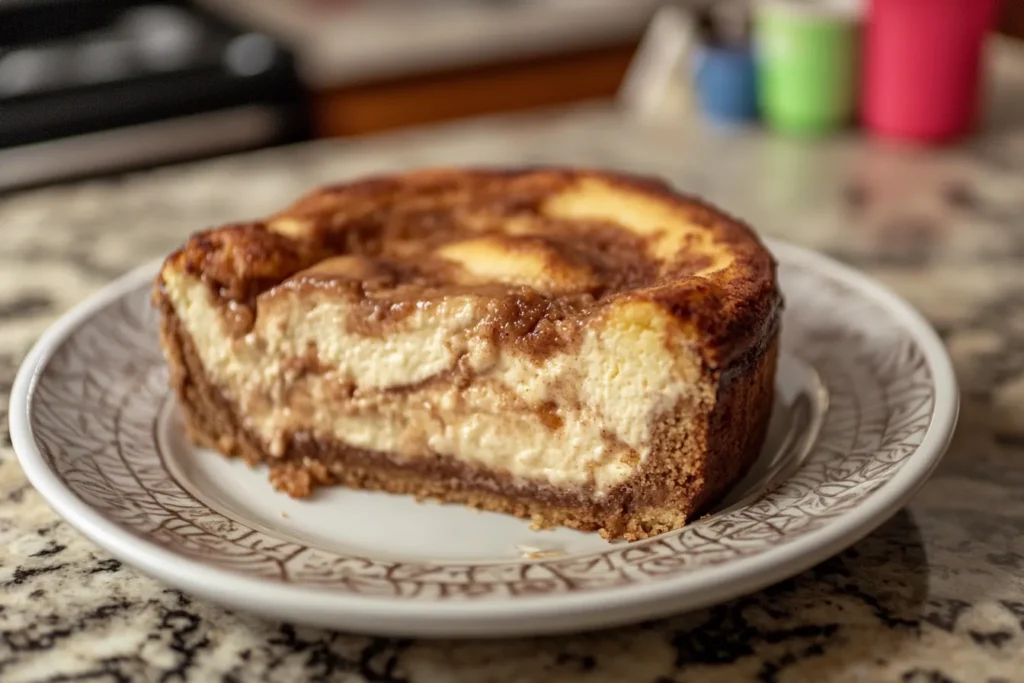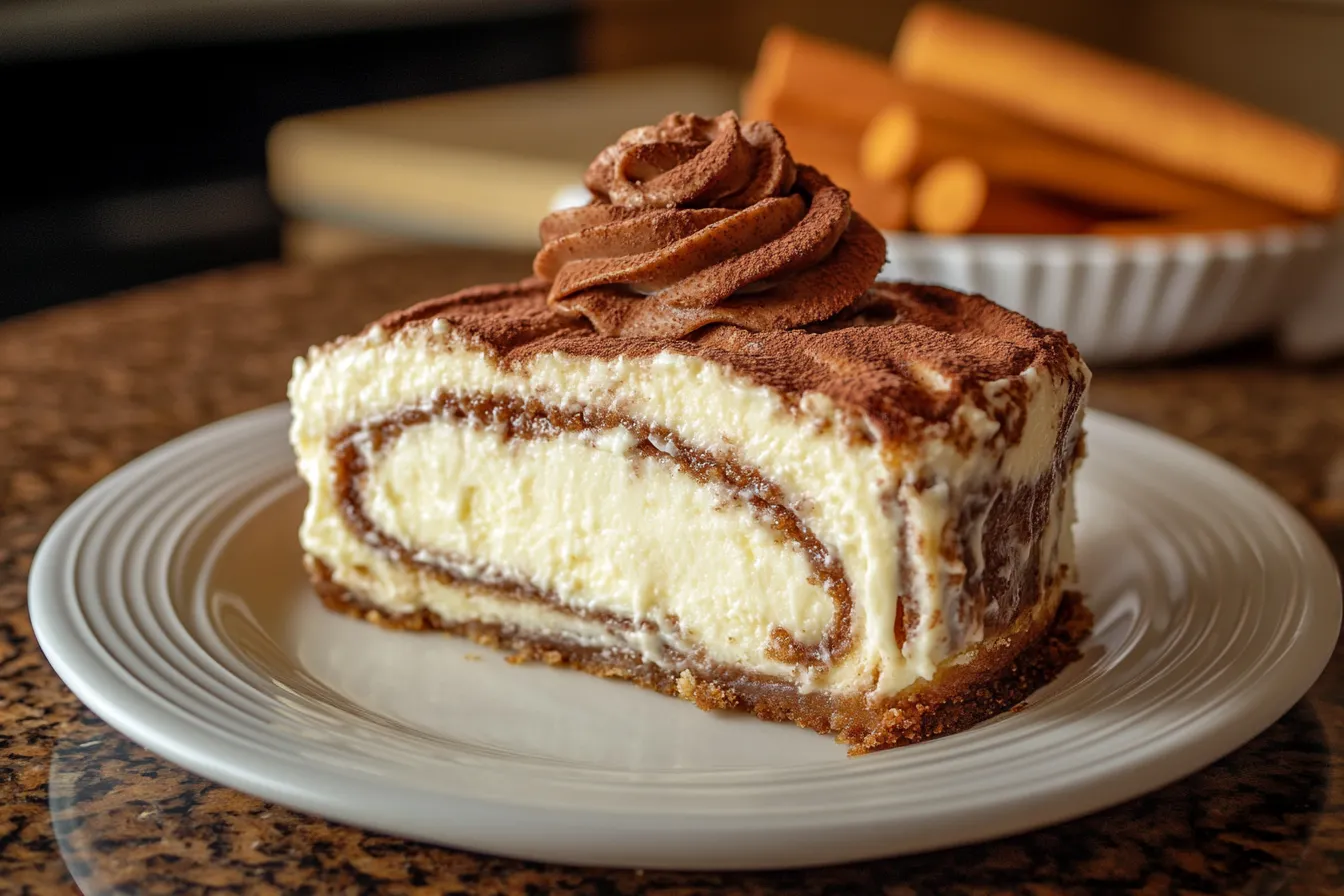Have you ever baked cinnamon rolls, only to find that the bottoms turn out dry or just not as gooey and irresistible as the tops? It’s frustrating, isn’t it? You pour all that love into rolling, filling, and baking, only to have them fall a little flat. Well, here’s a game-changing secret: putting cream in the bottom of your cinnamon rolls. Sounds intriguing, right? This simple trick not only ensures every bite is soft and rich but also takes your rolls from good to bakery-level amazing. If you’ve been searching for a way to elevate your cinnamon roll game, you’re about to discover the missing piece! Let’s dive in.
List Of Contents
What Are Cinnamon Rolls?
Cinnamon rolls are a timeless pastry loved worldwide. They consist of a soft, yeasty dough swirled with a flavorful filling made from sugar, butter, and cinnamon.
The history of cinnamon rolls dates back to Northern Europe, particularly Sweden, where they’re celebrated annually on “Kanelbullens Dag” or Cinnamon Roll Day. Their popularity spread across the globe, evolving into countless variations, including the sticky-sweet versions we know today.
Traditional cinnamon rolls are prepared by:
- Rolling out enriched dough.
- Spreading butter and sprinkling the cinnamon-sugar filling.
- Rolling up the dough, slicing it, and baking until golden brown.
The end product? A treat that’s soft, slightly caramelized on the edges, and heavenly aromatic. Check out more recipes here.
The Science of Baking Cinnamon Rolls
Understanding the chemistry behind cinnamon rolls helps explain their transformation during baking. Key interactions occur between:
- Yeast and sugar: Yeast ferments the sugar, releasing carbon dioxide, which causes the dough to rise.
- Butter and flour: Butter enriches the dough, contributing to its softness and flavor.
During baking:
- Heat activates the yeast, allowing the rolls to puff up.
- Moisture in the dough is critical for keeping the rolls tender.
Without proper moisture retention, cinnamon rolls risk becoming dry or tough.
Common Problems When Baking Cinnamon Rolls

Even seasoned bakers face challenges when baking cinnamon rolls. Two common issues include:
- Dry cinnamon rolls
This happens when:- The dough lacks moisture.
- Rolls are overbaked, evaporating too much water.
- Uneven baking
- Some rolls may brown too quickly on the outside while remaining raw inside.
- Poor oven calibration or unevenly arranged rolls can exacerbate this problem.
What Makes Cinnamon Rolls Moist and Gooey?
The hallmark of a great cinnamon roll is its moist and gooey texture. Achieving this involves:
- Proper hydration: A dough with balanced water and fat content retains more moisture during baking.
- Techniques like proofing: Letting the dough rest and rise ensures fluffiness.
- Adding cream: Cream poured at the base of the baking dish transforms into a luscious, caramelized layer, infusing the rolls with richness.
Exploring Unique Cinnamon Roll Variations
Cinnamon rolls are versatile and have evolved into numerous regional versions, including:
- Swedish cinnamon buns (Kanelbullar), lighter in texture and often flavored with cardamom.
- American sticky buns, drenched in caramel and often topped with pecans.
Popular variations include:
- Fillings like chocolate, fruit jams, or cream cheese.
- Toppings such as icing, glaze, or powdered sugar for added sweetness.
The Role of Cream in Cinnamon Rolls
Why Add Cream to Cinnamon Rolls?
Adding cream to cinnamon rolls might seem unconventional, but it’s a game-changer. Here’s why:
- Enhancing flavor
Cream adds a subtle richness that elevates the overall taste. Its natural fats complement the sweetness of the cinnamon-sugar filling, creating a more indulgent flavor profile. The cream seeps into the dough during baking, ensuring every bite is moist and flavorful. - Improving texture
A common complaint about cinnamon rolls is that they can turn out dry. Cream solves this by:- Retaining moisture in the dough.
- Encouraging the formation of a gooey, caramelized base layer that contrasts beautifully with the soft dough.
Pro Tip: Using cream works best for recipes designed for richer, dessert-style cinnamon rolls rather than the drier, bread-like varieties. Check out more recipes here.
How Cream Affects the Baking Process
When cream is poured into the bottom of a baking dish, it transforms during baking in several fascinating ways:
- Interaction with dough: The cream is absorbed by the base of the rolls, thereby keeping the dough soft and tender. Furthermore, it prevents overbaking at the bottom while simultaneously adding a decadent, almost pudding-like texture.
- Caramelized layers: As the sugar in the filling mixes with the cream, it creates a caramel sauce at the base of the pan. This ensures that the rolls are not only gooey but also beautifully golden.
The Result? Cinnamon rolls that are moist, evenly baked, and infused with a creamy richness. Check out more recipes here.
Comparison: Cream vs. Other Liquids
While cream is the standout choice, other liquids are sometimes used in cinnamon roll recipes. Here’s a comparison:
| Liquid | Benefits | Drawbacks |
|---|---|---|
| Milk | Adds moisture; slightly lighter texture | Less richness compared to cream |
| Butter | Contributes to flavor and browning | Does not distribute as evenly as cream |
| Water | Basic hydration for the dough | Lacks flavor or richness |
Why Cream Wins:
Thanks to its high fat content and thick consistency, cream not only enhances moisture retention but also contributes significantly to the texture and flavor of the rolls. Moreover, it creates a perfect balance of richness and softness, which, in turn, elevates the overall eating experience. In addition to these qualities, cream surpasses other options by ensuring a consistent gooeyness throughout the rolls. Consequently, it stands out as the ultimate choice, especially when compared to alternatives like milk or butter, which lack the same level of indulgence and versatility.
Types of Cream to Use
Not all creams are created equal. The type of cream you use can significantly impact the outcome.
- Heavy Cream
- Contains 36–40% fat.
- Ideal for achieving a rich and creamy texture.
- Best for traditional cream-based cinnamon rolls.
- Half-and-Half
- A blend of milk and cream with about 10–12% fat.
- Lighter alternative for those who prefer less richness.
- Dairy-Free Alternatives
- Coconut cream: Adds a subtle tropical flavor.
- Cashew cream: A neutral option for non-dairy eaters.
- Oat or almond cream: Suitable for vegans, but may result in a slightly thinner sauce.
Pro Tip: Always use fresh cream for optimal results. Avoid low-fat substitutes, as they don’t create the same indulgent caramelized effect.
When and Where to Add Cream

The timing and placement of cream are absolutely critical for achieving perfectly baked cinnamon rolls. To begin with, carefully measuring and pouring the cream ensures even distribution, which plays a key role in the final texture. Moreover, adding the cream at the right stage of preparation allows the dough to absorb it effectively, further enhancing the rolls’ moistness. Here’s a step-by-step guide to ensure success:
- Add cream to the bottom of the baking dish:
Pour the cream into the dish before placing the rolled-up dough. This ensures the base absorbs the cream evenly. - Timing considerations:
- For gooier rolls, add the cream just before baking.
- For firmer rolls with a crispier base, let the rolls sit in the cream for 10–15 minutes before baking.
- Amount of cream to use:
Use enough to cover the bottom of the dish but avoid submerging the rolls. Approximately ½ cup of cream for a standard 9×13-inch dish works well.
Pro Tip: Experiment with adding a splash of vanilla extract or a pinch of cinnamon to the cream for an extra layer of flavor.
Mastering the Technique of Cream-Based Cinnamon Rolls
Step-by-Step Guide to Adding Cream
Mastering the technique of using cream in cinnamon rolls is essential to achieving the best results. To begin with, understanding the correct process ensures the cream is distributed evenly, which enhances the texture and flavor. Additionally, following these steps carefully helps prevent common issues like soggy or uneven rolls. For optimal success, pay close attention to each detail and try the following simple steps:
- Prepare the baking dish
- Lightly grease the dish to prevent sticking.
- Ensure it has slightly high sides to hold the cream and prevent spills during baking.
- Measure the cream
- Use about ½ to 1 cup of cream, depending on the size of the dish and number of rolls.
- Opt for heavy cream for the richest flavor and texture.
- Pour the cream
- Evenly distribute the cream across the bottom of the dish.
- Ensure the cream forms a thin, even layer for consistent absorption.
- Arrange the rolls
- Place the rolled dough directly onto the cream.
- Ensure enough space between rolls for them to expand during baking.
- Bake as directed
- Check the rolls halfway through to ensure the cream isn’t burning. If needed, tent the dish with foil to prevent over-browning.
By adding cream at the right time and amount, you’ll achieve soft, gooey cinnamon rolls every time. Check out more recipes here.
Variations of Cream-Based Cinnamon Rolls
For bakers looking to add a creative twist, try these variations:
- Flavored cream
- Add vanilla extract or almond extract to the cream for a subtle flavor boost.
- Whisk in a dash of ground cinnamon or nutmeg for an extra spice kick.
- Sweetened cream
- Mix in a tablespoon of sugar or maple syrup to create an even more caramelized base.
- Seasonal ingredients
- Incorporate pumpkin spice or apple cider into the cream for a fall-inspired variation.
- Infuse cream with lavender or citrus zest for a springtime flair.
- Toppings with cream
- After baking, drizzle a glaze made from cream, powdered sugar, and vanilla for added sweetness.
Troubleshooting Issues with Cream

Even with the right technique, challenges can arise. Here’s how to troubleshoot common issues:
- Soggy rolls
- Problem: Too much cream was added, or the rolls were underbaked.
- Solution: Use less cream or bake longer to allow the liquid to reduce.
- Burnt bottoms
- Problem: The cream scorched during baking.
- Solution: Reduce oven temperature slightly or cover the dish with foil partway through baking.
- Uneven absorption
- Problem: Some rolls are gooey while others are dry.
- Solution: Ensure the cream is evenly distributed in the baking dish.
- Rolls sticking to the pan
- Problem: Insufficient greasing of the dish.
- Solution: Lightly grease the dish or use parchment paper for easy cleanup.
Tips for Serving Cream-Enhanced Cinnamon Rolls
Cinnamon rolls are a versatile treat that can be served in countless ways. Here are some ideas to make them even more enjoyable:
- Pairing suggestions
- Serve with freshly brewed coffee or spiced chai tea for a cozy breakfast.
- Offer a glass of cold milk or a frothy cappuccino for a classic pairing.
- Garnishing ideas
- Top with chopped nuts, like pecans or walnuts, for added crunch.
- Sprinkle powdered sugar for a festive presentation.
- Customizable toppings
- Add a cream cheese glaze for a tangy contrast.
- Drizzle caramel or chocolate sauce for a dessert-worthy treat.
Pro Tip: Warm the cinnamon rolls slightly before serving to enhance their gooey texture and aroma.
Benefits of Using Cream in Other Recipes
The cream technique isn’t just for cinnamon rolls—it’s a versatile method that can elevate other baked goods. Here are some ideas:
- Sticky buns
- Add cream to the base of sticky buns for a rich, caramelized layer.
- Bread pudding
- Use cream instead of milk for a custard-like texture and decadent flavor.
- Coffee cakes
- Drizzle cream over the batter before baking to keep the cake moist.
- Savory applications
- Pour cream under savory rolls, like cheese or garlic rolls, for a creamy twist.
- Creative inspirations
- Experiment with pouring cream over cobblers or fruit crisps for added richness.
By applying this technique, you can transform ordinary recipes into extraordinary culinary creations. Check out more recipes here.
FAQs
1. Why does cream make cinnamon rolls gooey?
The cream keeps the dough moist and creates a caramelized sauce at the base.
2. Can I use milk instead of cream?
Yes, but milk lacks the richness and fat content of cream, resulting in a lighter texture.
3. What’s the best type of cream for cinnamon rolls?
Heavy cream is ideal for achieving the richest and most indulgent rolls.
4. Can I use non-dairy cream?
Yes, options like coconut or almond cream work well for dairy-free versions.
5. Should I warm the cream before adding it?
It’s not necessary, but slightly warming the cream can help it absorb more evenly.
6. How do I prevent cream from burning?
Cover the dish with foil if the cream begins to scorch, or lower the oven temperature.
7. Can I make cream-based cinnamon rolls ahead of time?
Yes, assemble the rolls with cream and refrigerate overnight, then bake fresh in the morning.
8. What happens if I add too much cream?
The rolls may become soggy. Use just enough to coat the bottom of the dish.
9. Is adding cream suitable for all cinnamon roll recipes?
Cream works best with richer, dessert-style recipes rather than drier, bread-like versions.
10. How do I store leftover cream-based cinnamon rolls?
Keep the cinnamon rolls in a sealed, airtight container and refrigerate them for a maximum of three days. Reheat gently before serving.
